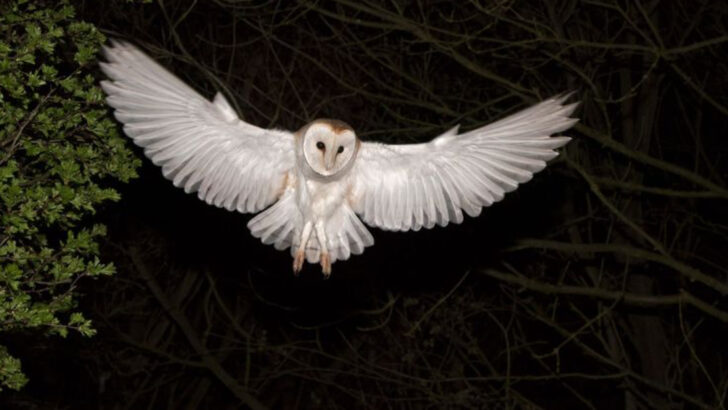The real party doesn’t start until the sun goes down. While you’re tucked under the covers, the wild is wide awake—buzzing, howling, slinking, and fluttering through the dark. From glowing beetles to stealthy predators, summer nights belong to creatures most of us never see. Some are eerie. Some are beautiful. Some might be just outside your window right now. These animals thrive under moonlight, ruling the shadows while the rest of the world sleeps. Whether they’re hooting in treetops or skittering beneath leaves, their secret nightlife is anything but boring. Ready to meet the true rulers of the summer night?
Barn Owl
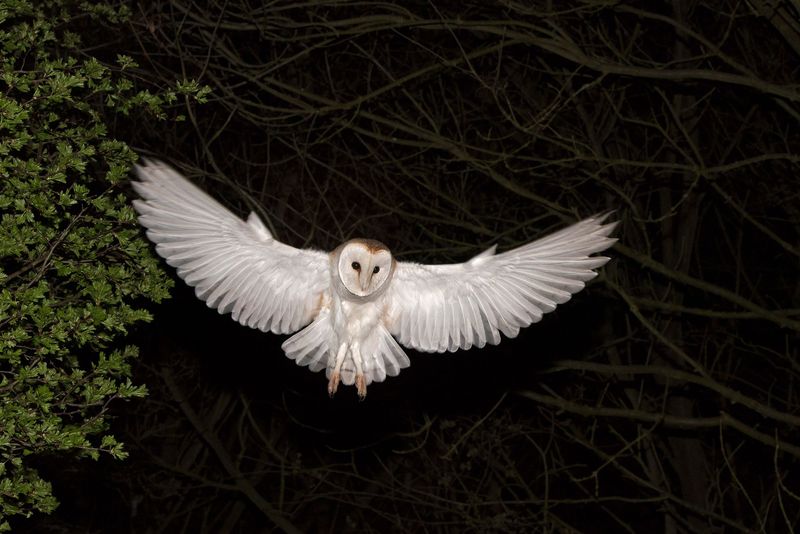
In the quiet of the night, the barn owl emerges with an enigmatic grace. Known for its eerie screech and silent flight, this bird of prey hunts small mammals with uncanny precision. Perched on a fence post, its heart-shaped face seems to glow in the moonlight, exuding an ethereal beauty.
Barn owls have impeccable hearing, enabling them to locate prey in complete darkness. Their wings are adapted for silent flight, allowing them to swoop down without a whisper. These owls are quintessential night dwellers, embodying the mystery and allure of the nocturnal world.
Bats
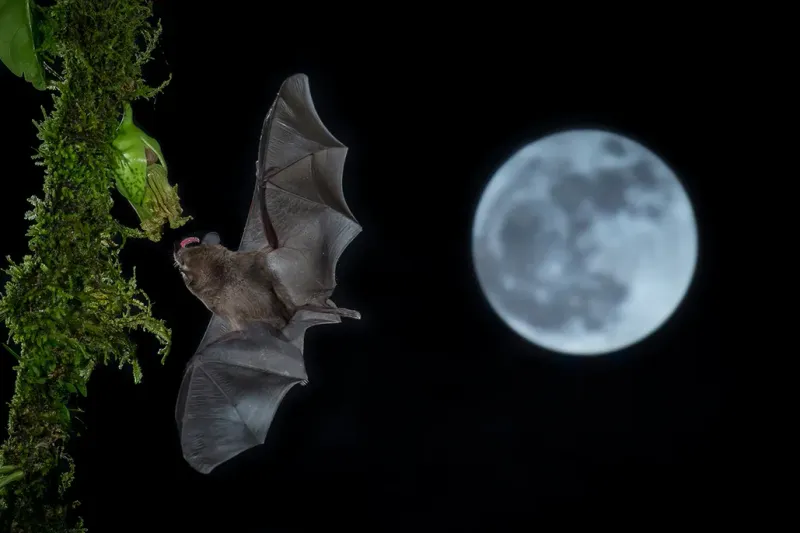
As the stars twinkle above, bats take to the sky, weaving a tapestry of shadow and motion. With over 1,400 species worldwide, these creatures are the only mammals capable of sustained flight. Utilizing echolocation, bats navigate the night with expert precision, feasting on insects.
Despite their misunderstood reputation, bats play a crucial role in ecosystems by controlling insect populations. They exhibit diverse behaviors, from cave-dwelling to tree-roosting. Observing their nightly ballet is a testament to nature’s ingenuity, as they flutter gracefully through the darkness.
Fireflies
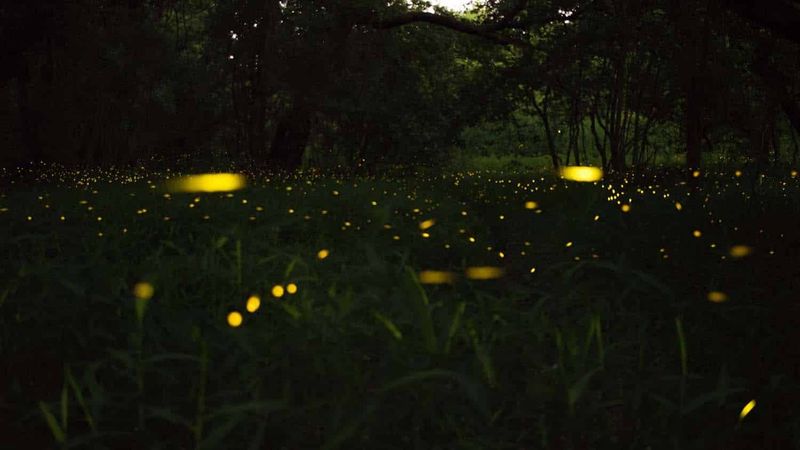
On warm summer nights, fireflies transform dark fields into enchanting wonderlands. These beetles produce a bioluminescent glow, signaling to potential mates. Each flash is a magical display of communication, a dance of lights that captivates the heart.
Fireflies use their light to attract mates, with each species exhibiting unique patterns of flashes. This spectacle of nature not only serves a purpose but also offers a breathtaking visual experience. Their presence in a garden or meadow is a gentle reminder of the beauty that night conceals.
Raccoons
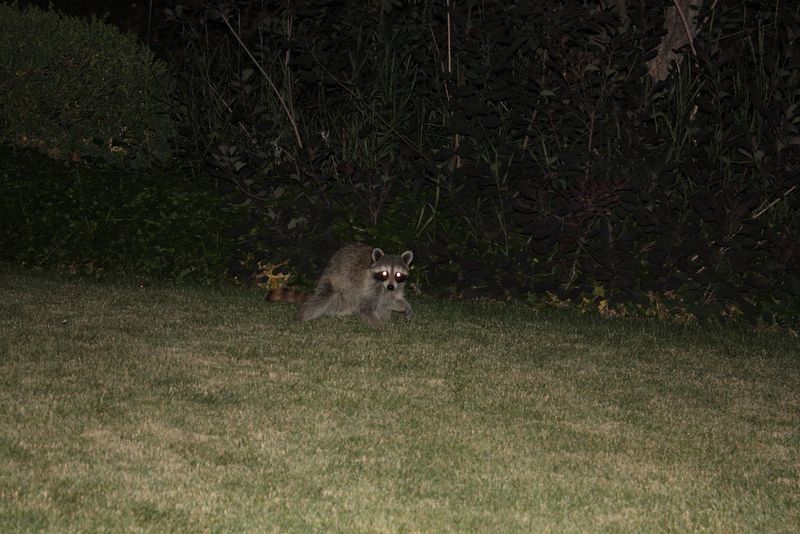
Raccoons, with their masked faces and nimble fingers, are the nighttime bandits of the animal world. Under the cover of darkness, they explore urban and rural landscapes alike, foraging for food with remarkable dexterity.
Known for their intelligence and curiosity, raccoons are adept problem solvers. They often raid garbage cans or scavenge backyard treats, demonstrating their adaptability. While some view them as pests, these creatures play a vital role in the ecosystem by controlling populations of insects and small prey.
Hedgehogs
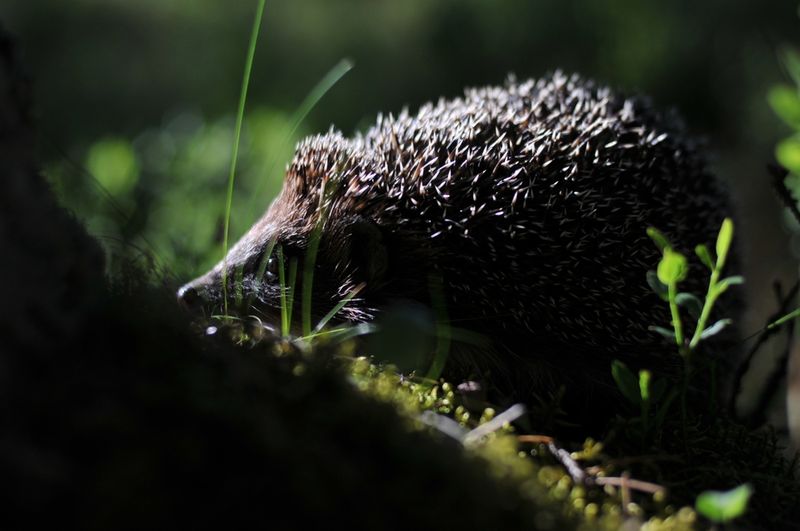
With a shuffle and a snort, hedgehogs amble through gardens and open fields at night. These small mammals are covered in sharp quills, which they use for defense. At first glance, they appear unassuming, but their nightly escapades reveal a lively nature.
Hedgehogs feed on insects, slugs, and snails, making them beneficial to gardeners. Their ability to curl into a tight ball is a unique defense mechanism against predators. Observing a hedgehog in the moonlight is a charming glimpse into the secretive world of nocturnal life.
Frogs
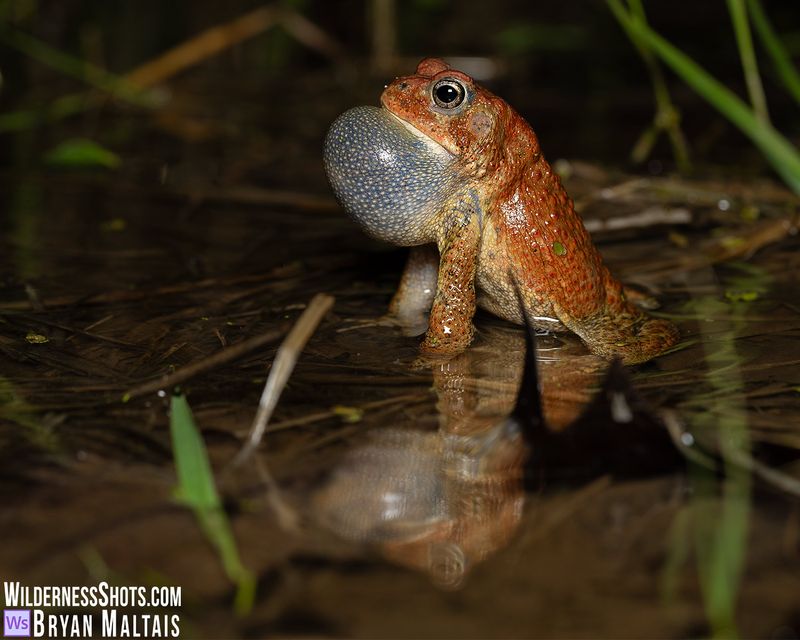
On humid summer nights, the air resonates with the symphony of croaking frogs. These amphibians take center stage, their calls echoing across ponds and wetlands.
Frogs are crucial to ecosystems, serving as both predators and prey. Their presence indicates a healthy environment, as they require clean water for breeding. With a variety of species, each with a unique call, they add a rhythmic soundtrack to the night. Listening to their chorus is a soothing reminder of the interconnectedness of life.
Moths
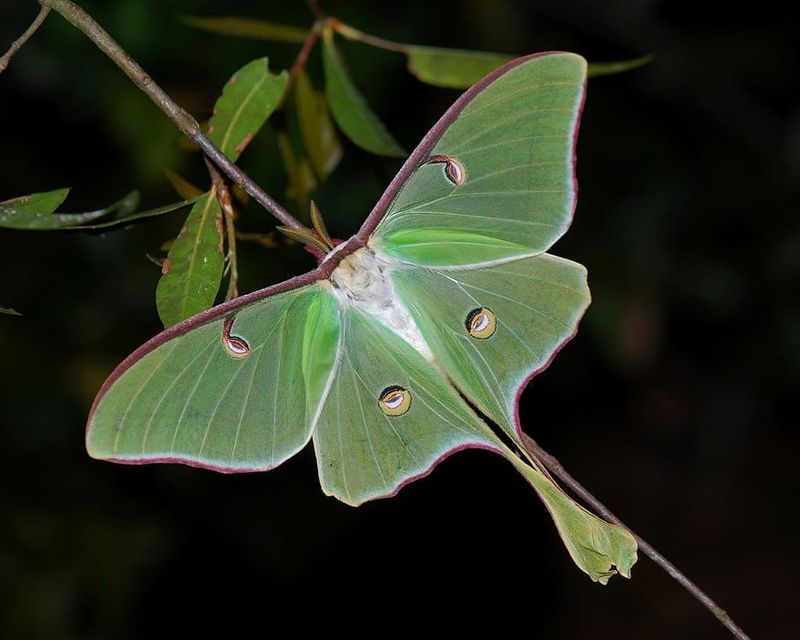
In the stillness of night, moths flutter with delicate grace, drawn to light like a moth to a flame. These insects are nocturnal pollinators, playing an essential role in the life cycle of many plants.
Moths exhibit a wide array of colors and patterns, each species uniquely adapted to its environment. Unlike butterflies, their nighttime activity and muted hues offer a quieter, subtle beauty. Watching a moth dance around a light is to witness a harmonious blend of fragility and purpose.
Cicadas
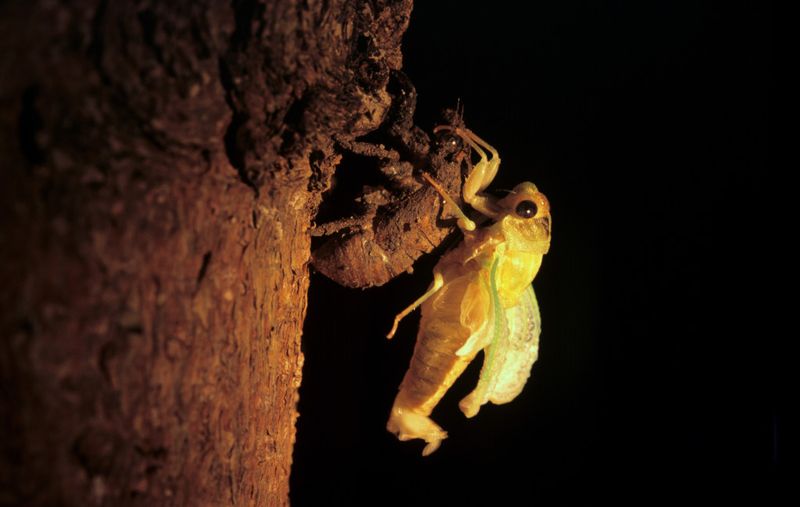
Cicadas are the heralds of summer nights, their distinctive song a staple of warm, humid evenings. Emerging from the ground, they climb trees to shed their exoskeletons and sing their mating calls.
These insects have a fascinating life cycle, spending years underground before a brief, noisy stint above ground. The sound of cicadas is synonymous with summer, a natural melody that fills the air. Their presence is a testament to resilience, marking the rhythm of the season’s night.
Foxes
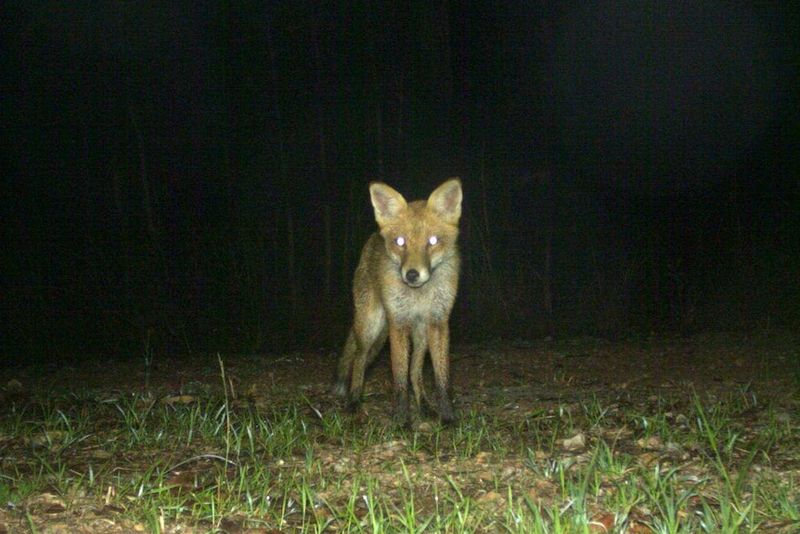
Foxes, with their keen senses and agile movement, are the shadows of the night. These cunning creatures roam fields and forests under the stars, hunting small animals and scavenging for food.
Renowned for their intelligence, foxes adapt to various environments, from rural countrysides to urban landscapes. Their bushy tails and striking features make them iconic night roamers. Watching a fox under the moonlit sky is witnessing the elegance and adaptability of nature’s nocturnal world.
Skunks
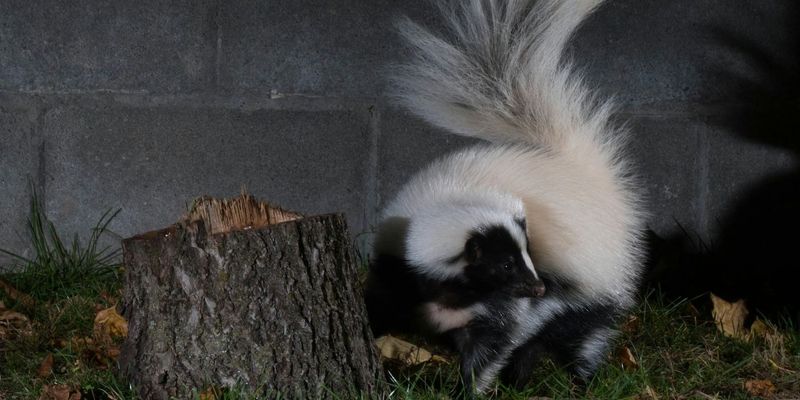
The skunk, known for its potent defense mechanism, wanders boldly through the night. With distinctive black and white stripes, it explores backyards and forests alike, searching for insects and grubs.
Despite their reputation, skunks are generally peaceful creatures that avoid confrontation. They play an important role in controlling insect populations. Observing a skunk in its natural element offers insight into the balance of nature, where even the most misunderstood creatures have their place.
Crickets

Crickets, with their rhythmic chirps, bring life to the night. These insects are nature’s musicians, their songs a comforting backdrop to summer evenings.
Crickets communicate through their chirping, which is influenced by temperature. Their presence signifies a thriving ecosystem, as they are both predators and prey. Each chirp is a reminder of summer’s warmth, a natural lullaby that accompanies the night. Listening to crickets is to experience the subtle symphony of nature.
Deer
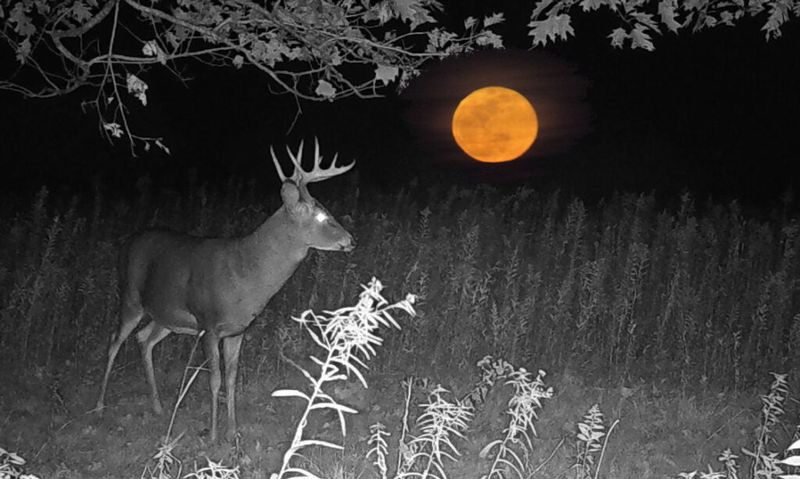
Deer, with their quiet grace, often venture into open fields by night. These gentle herbivores graze under the cover of darkness, moving silently through forests and meadows.
Their acute senses and cautious nature make them adept night dwellers. Deer are an integral part of many ecosystems, contributing to the health of forest environments. Observing a deer in the moonlight is to glimpse the serene side of nocturnal life, a peaceful presence amid the night’s activity.
Opossums
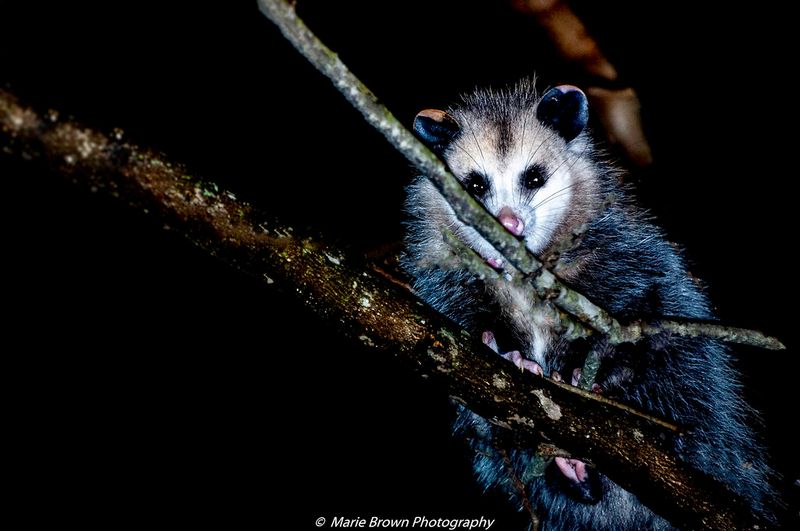
Opossums, North America’s only marsupials, are known for their nocturnal habits and adaptability. With prehensile tails and a knack for scavenging, they thrive in diverse environments.
These creatures are often misunderstood, yet they play a crucial role in ecosystems by cleaning up carrion and controlling pests. Opossums are resilient survivors, capable of “playing dead” as a defense mechanism. Spotting an opossum at night offers a glimpse into their resourceful existence amid the shadows.
Glow Worms
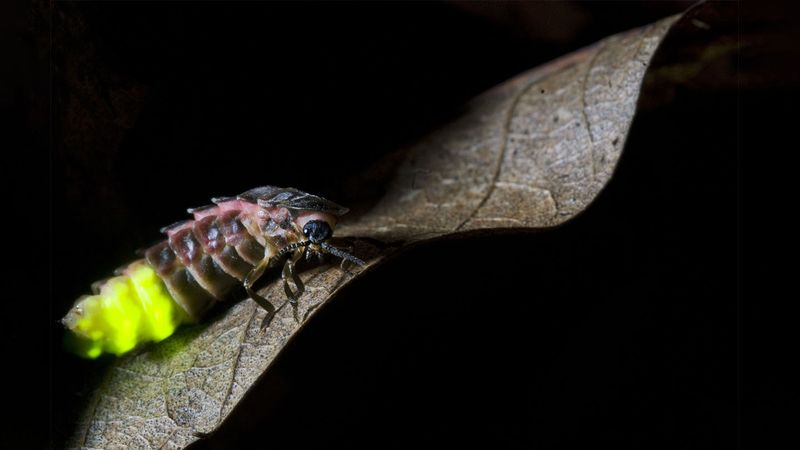
In the stillness of a summer night, glow worms create an enchanting spectacle with their bioluminescent glow. These captivating creatures inhabit dark, damp environments, thriving in places such as forest floors and garden underbrush.
Their soft, green light is produced by a chemical reaction within their bodies, attracting mates and deterring predators. This subtle glow sets a magical ambiance, visible only to those who venture into the night.
Fun fact: the glow worm’s light is one of the most efficient lights in the world, converting nearly 100% of energy into light without heat.

